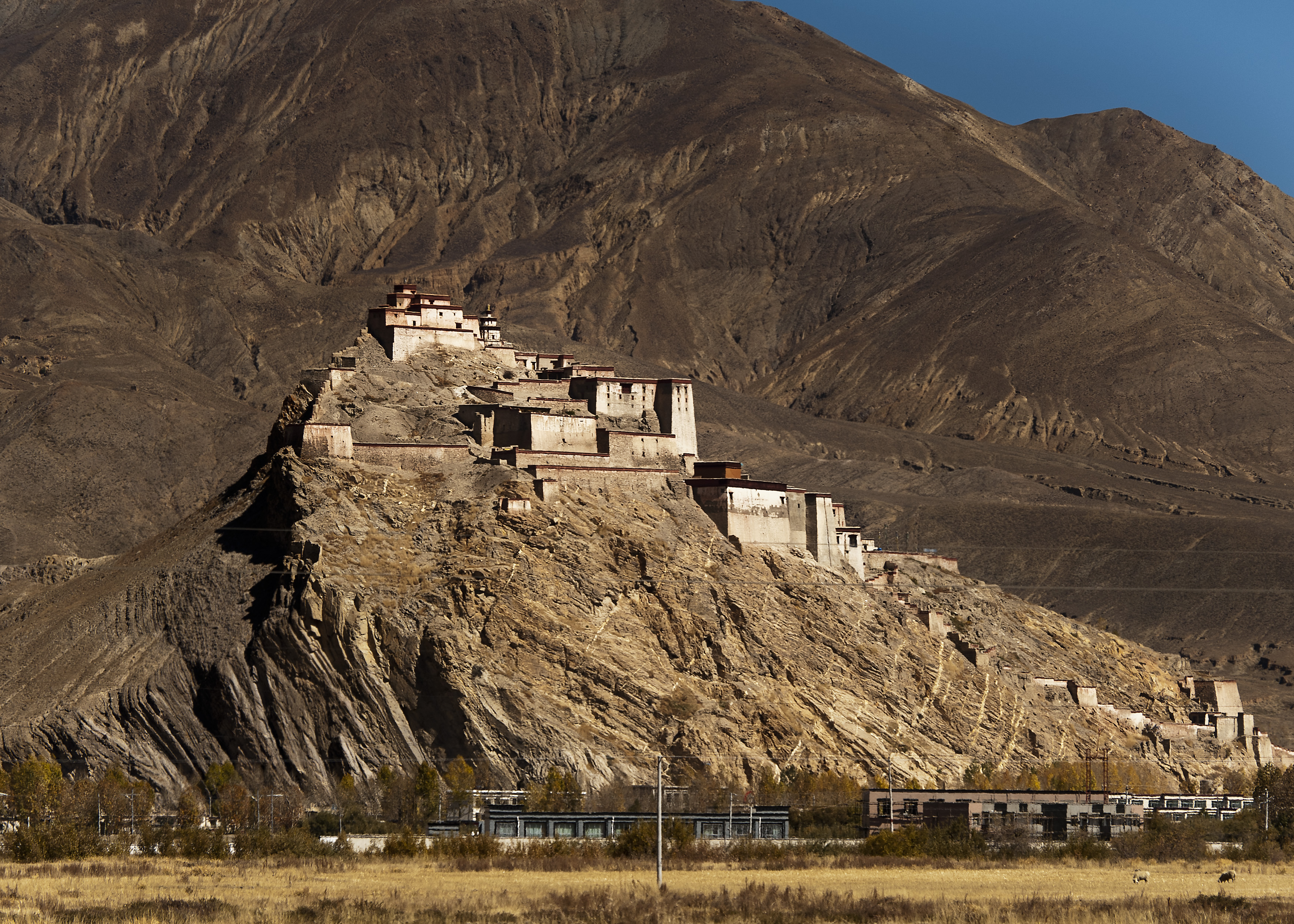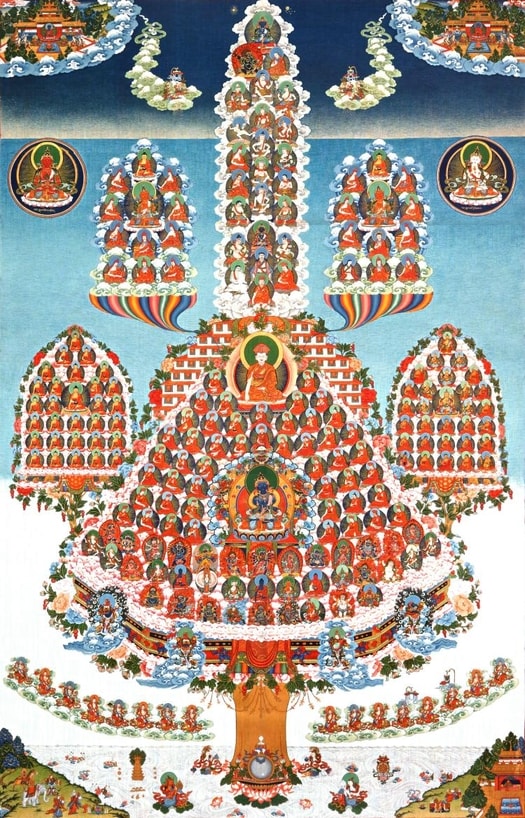|
Tashichho Dzong
Tashichho Dzong ( dz, ) is a Buddhist monastery and fortress on the northern edge of the city of Thimphu in Bhutan, on the western bank of the Wang Chu. It has traditionally been the seat of the Druk Desi (or "Deb Raja"), the head of Bhutan's civil government, an office which has been combined with the kingship since the creation of the monarchy in 1907, and summer capital of the country. In old British documents, it is known as Tassisudon. The main structure of the whitewashed building is two-storied with three-storied towers at each of the four corners topped by triple-tiered golden roofs. There is also a large central tower or ''utse''. History The original Thimphu dzong (the Do-Ngön Dzong, or Blue Stone Dzong) was built in 1216 by Lama Gyalwa Lhanapa (1164–1224), founder of the Lhapa branch of the Drikung Kagyu, at the place where Dechen Phodrang Monastery now stands on a ridge above the present Tashichö-dzong. In 1641 ''Shabdrung'' Ngawang Namgyal took over that Dzo ... [...More Info...] [...Related Items...] OR: [Wikipedia] [Google] [Baidu] |
Jigme Dorji Wangchuck
Jigme Dorji Wangchuck ( dz, འབྲུག་རྒྱལ་པོ་ འཇིགས་མེད་རྡོ་རྗེ་དབང་ཕྱུག་མཆོག་, ; 2 May 1928 – 21 July 1972) was the 3rd Druk Gyalpo of Bhutan. He began to open Bhutan to the outside world, began modernization, and took the first step towards democratization. Early life Jigme Dorji Wangchuck was born in 1928 in Thruepang Palace in Trongsa. At a young age, he was apprenticed in etiquette and leadership at the royal court of his father the King. Wangchuck was educated in a British manner in Kalimpong and went on study tours and stay to many foreign countries such as Scotland and Switzerland from where he drew inspiration to develop Bhutan with suitable adaptations. In 1943, he was appointed Trongsa '' Dronyer'' and then elevated as the 25th Paro ''Penlop'' in 1950, upon the death of the 24th Paro ''Penlop'', Tshering Penjor (1902–1949). Wangchuck married ''Ashi'' Kesang Choden Wangchuck ( ... [...More Info...] [...Related Items...] OR: [Wikipedia] [Google] [Baidu] |
Dzongs In Bhutan
Dzong architecture is used for dzongs, a distinctive type of fortified monastery ( dz, རྫོང, , ) architecture found mainly in Bhutan and Tibet. The architecture is massive in style with towering exterior walls surrounding a complex of courtyards, temples, administrative offices, and monks' accommodation. Characteristics Distinctive features include: * High inward sloping walls of brick and stone painted white with few or no windows in the lower sections of the wall * Use of a surrounding red ochre stripe near the top of the walls, sometimes punctuated by large gold circles * Use of unique style flared roofs atop interior temples * Massive entry doors made of wood and iron * Interior courtyards and temples brightly colored in Buddhist-themed art motifs such as the ashtamangala or swastika Regional differences Bhutan Dzongs serve as the religious, military, administrative, and social centers of their district. They are often the site of an annual ''tsechu'' or religiou ... [...More Info...] [...Related Items...] OR: [Wikipedia] [Google] [Baidu] |
Dechencholing Palace
Dechencholing Palace ( dz, བདེ་ཆེན་ཆོས་གླིང་, ') is located in Thimphu, the capital of Bhutan, to the north of the Tashichho Dzong and north of the city centre. It was built in 1953 by the third king of Bhutan ''Druk Gyalpo'' Jigme Dorji Wangchuck. Geography The palace lies at the northern end of the Thimphu Valley, on the west bank of the Thimphu River. The palace is accessed via the Dechhen Lam (road) which runs along the eastern bank of the Thimphu river from the district of Yangchenphug, through Langjupakha for several kilometres before approaching the palace. On the way to the palace the road passes the Royal Banquet Hall, the Centre for Bhutan Studies, the Woodcraft Centre and then passes the Indian Estate on the other side of the river. Just south of the palace on the other side of the river is the suburb of Taba. The palace is surrounded by forest to the east and west; the eastern forest is denser and is said to be the only leafy forest ... [...More Info...] [...Related Items...] OR: [Wikipedia] [Google] [Baidu] |
Politics Of Bhutan
The Government of Bhutan has been a constitutional monarchy since 18 July 2008. The King of Bhutan is the head of state. The executive power is exercised by the Lhengye Zhungtshog, or council of ministers, headed by the Prime Minister. Legislative power is vested in the bicameral Parliament, both the upper house, National Council, and the lower house, National Assembly. A royal edict issued on April 22, 2007 lifted the previous ban on political parties in anticipation of the National Assembly elections in the following year. In 2008, Bhutan adopted its first modern Constitution, codifying the institutions of government and the legal framework for a democratic multi-party system. Sovereignty Bhutanese external relations and foreign policies were put under British control following the 1910 Treaty of Punakha. However, due to the policy of self-imposed isolationism, the effect of the treaty was limited to an extent. After Indian independence in 1949, Bhutan and India agreed t ... [...More Info...] [...Related Items...] OR: [Wikipedia] [Google] [Baidu] |
Rangjung Rigpe Dorje
The sixteenth Gyalwa Karmapa, Rangjung Rigpe Dorje (; August 14, 1924 – November 5, 1981) was the spiritual leader of the Karma Kagyu lineage of Tibetan Buddhism. Followers believed him to be part of the oldest line of reincarnate lamas in Vajrayana Buddhism, known as the Karmapas, whose coming was predicted by the Buddha in the Samadhiraja Sutra. The 16th Karmapa was considered to be a "living Buddha" and was deeply involved in the transmission of the Vajrayana Buddhism to Europe and North America following the Chinese invasion of Tibet. He had many monikers, including “King of the Yogis”, and is the subject of numerous books and films. Biography Birth The 16th Karmapa was born in Denkhok in the Dergé province in Eastern Tibet, Kham, near the Dri Chu or Yangtze River. The previous Karmapa Khakhyab Dorje (1871-1922) left a letter setting forth the circumstances of his next incarnation. The Karmapa's attendant, Jampal Tsultrim, possessed the letter of prediction, which ma ... [...More Info...] [...Related Items...] OR: [Wikipedia] [Google] [Baidu] |
Karmapa
The Karmapa (honorific title ''His Holiness the Gyalwa'' ��ྒྱལ་བ་, Victorious One''Karmapa'', more formally as ''Gyalwang'' ��ྒྱལ་དབང་ཀརྨ་པ་, King of Victorious Ones''Karmapa'', and informally as the ''Karmapa Lama'') is the head of the Karma Kagyu, the largest sub-school of the Kagyu (བཀའ་བརྒྱུད, ), itself one of the four major schools of Tibetan Buddhism. Karmapa was Tibet's first consciously incarnating lama. The historical seat of the Karmapas is Tsurphu Monastery in the Tolung valley of Tibet. The Karmapa's principal seat in exile is the Dharma Chakra Centre at Rumtek Monastery in Sikkim, India. His regional monastic seats are Karma Triyana Dharmachakra in New York and Dhagpo Kagyu Ling in Dordogne, France. Due to a controversy within the Karma Kagyu school over the recognition process, the identity of the current 17th Karmapa is disputed by some. See Karmapa controversy for details. Origin of the lineage D� ... [...More Info...] [...Related Items...] OR: [Wikipedia] [Google] [Baidu] |
Shabdrung Ngawang Namgyal
Ngawang Namgyal (later granted the honorific Zhabdrung Rinpoche, approximately "at whose feet one submits") (; alternate spellings include ''Zhabdrung Ngawang Namgyel''; 1594–1651) and known colloquially as The Bearded Lama, was a Tibetan Buddhist ''lama'' and the unifier of Bhutan as a nation-state. In addition to unifying the various warring fiefdoms for the first time in the 1630s, he also sought to create a distinct Bhutanese cultural identity separate from the Tibetan culture from which it was derived. Birth and enthronement at Ralung ''Zhabdrung'' Ngawang Namgyal was born at Ralung () Monastery, Tibet as the son of the Drukpa lineage-holder Mipham Tenpa'i Nyima (, 1567–1619), and Sönam Pelgyi Butri (), daughter of the ruler of Kyishö () in Tibet. On his father's side, Ngawang Namgyal descended from the family line of Tsangpa Gyare (1161–1211), the founder of the Drukpa Lineage. In his youth, Ngawang Namgyal was enthroned as the eighteenth Drukpa or throne-ho ... [...More Info...] [...Related Items...] OR: [Wikipedia] [Google] [Baidu] |
Monastery
A monastery is a building or complex of buildings comprising the domestic quarters and workplaces of monastics, monks or nuns, whether living in communities or alone ( hermits). A monastery generally includes a place reserved for prayer which may be a chapel, church, or temple, and may also serve as an oratory, or in the case of communities anything from a single building housing only one senior and two or three junior monks or nuns, to vast complexes and estates housing tens or hundreds. A monastery complex typically comprises a number of buildings which include a church, dormitory, cloister, refectory, library, balneary and infirmary, and outlying granges. Depending on the location, the monastic order and the occupation of its inhabitants, the complex may also include a wide range of buildings that facilitate self-sufficiency and service to the community. These may include a hospice, a school, and a range of agricultural and manufacturing buildings such as a bar ... [...More Info...] [...Related Items...] OR: [Wikipedia] [Google] [Baidu] |
Dechen Phodrang Monastery
Dechen Phrodrang. meaning "Palace of Great Bliss". is a Buddhist monastery in Thimphu, Bhutan. It is located to the north of the city. In 1971 it became a monastic school, called a lobra, and currently it has 450 student monks enrolled in eight-year courses with a staff of 15. The monastery contains a number of important historical Bhutanese artifacts including 12th century paintings monitored by UNESCO and a noted statue of Shabdrung Ngawang Namgyal on the upper floor. In the downstairs chapel, there is a central Sakyamuni Buddha Siddhartha Gautama, most commonly referred to as the Buddha, was a wandering ascetic and religious teacher who lived in South Asia during the 6th or 5th century BCE and founded Buddhism. According to Buddhist tradition, he was born in L .... References Buddhist monasteries in Bhutan Tibetan Buddhism in Bhutan Bhutan {{Buddhism-monastery-stub ... [...More Info...] [...Related Items...] OR: [Wikipedia] [Google] [Baidu] |
Drikung Kagyu
Drikung Kagyü or Drigung Kagyü ( Wylie: 'bri-gung bka'-brgyud) is one of the eight "minor" lineages of the Kagyu school of Tibetan Buddhism. "Major" here refers to those Kagyü lineages founded by the immediate disciples of Gampopa (1079-1153) while "minor" refers to all the lineages founded by disciples of Gampopa's main disciple, Phagmo Drupa (1110-1170). One of these disciples, Jigten Sumgön (1143-1217), is the founder of Drikung. History Like with all other Kagyu lineages, origins of Drikung Kagyü can be traced back to the Great Indian Master Tilopa who passed on his teachings to Mahasiddha Naropa who lived around 10th and 11th century. The founder of the Drikung Kagyü lineage was Jigten Sumgön (1143-1217) of the Kyura clan, who was the disciple of Phagmo Drupa. According to historical account from the time, Jigten Sumgön's teachings attracted more than 100,000 people at a time, with the highest number of attendance recorded at 130,000. Several sub-schools branc ... [...More Info...] [...Related Items...] OR: [Wikipedia] [Google] [Baidu] |

_at_Rumtek_Monastery%2C_Sikkim_in_1971.jpg)

